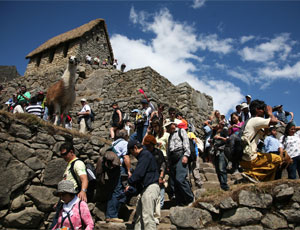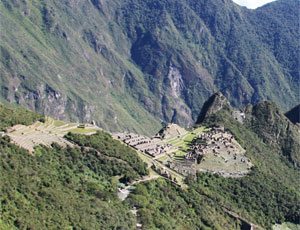LIMA, Peru — Peruvian officials have announced a plan to construct an elevator to access the famed "lost city" of the Incas, Machu Picchu, in an effort to bolster tourism to the No. 1 visited site in South America.
The regional tourism board for the Department of Cusco — DIRCETUR-Cusco — floated the project as part of its Regional Strategic Plan drawn up last year and completed in February.

If constructed, the elevator would include four cabs that could hold as many as a dozen persons. Each would ascend 1,500 ft from roughly the level of the Urubamba River to a point about 325 ft outside of the ruins themselves but within the citadel grounds. Tourists currently access Machu Picchu from the nearby town of Aguas Calientes by a 15-minute shuttle bus that uses a winding dirt road to access the ruins on a ridge crest.
The Cusco Chamber of Tourism says the elevator would increase daily access to Machu Picchu almost 10,000 each day. Currently, the maximum number of daily visitor hovers at approximately 2,500 persons.
The plan was first announced last year as part of a study by the regional government examining projects for private investment. A total of 20 projects valued at $2.34 million were included in an investment guide published by the Department of Cusco last summer.
As the most popular tourist destination in Peru, Machu Picchu is the main engine for generating revenue for the highland region. According to Peru’s Tourism Ministry (Mincetur) more than 850,000 people visited Machu Picchu last year — an increase of almost 64% from five years ago.
The site’s increasing popularity has raised concerns over its preservation. UNESCO removed Machu Picchu from its list of endangered World Heritage sites in 2007 only after Peru agreed to bolster the control over tourism to the ruins.
The head of the Archaeological Park of Machu Picchu, Fernando Astete told Peru’s leading newspaper El Comercio this week that the construction of such an elevator would damage the underlying rock support of the ruins. He also noted that projected influx of tourists would be unmanageable.
The elevator project is similar to a plan in the late 1990s to increase access to the Incan sanctuary with the construction of a cable car. That effort was eventually blocked by protests from scientists and the Peruvian public due to the concerns about preservation of the site.
In 2006, the ASCE included Machu Picchu in the Historic Civil Engineering Landmark Program citing the technical and structural achievement the site represents.
Local officials say the next step will be an environmental impact study that will include concerns that the construction of the elevator will damage the famous ruins. The tourism board has also planned a meeting next month with residents of Aguas Calientes to discuss possible development plans.






Post a comment to this article
Report Abusive Comment